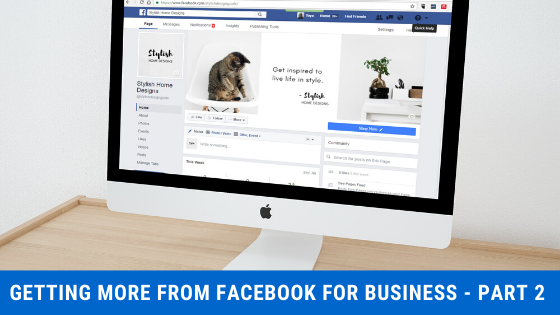In the past few weeks, social media networking giant Twitter have announced the impending launch…

Finding new members online
For many membership organisations, associations and charities, the digital marketing budget is a defining factor in the depth and breadth of campaigning. When it comes to assigning and establishing budget, digital marketing is particularly tricky because of the scalable options and infinite possibilities available across so many platforms. Which is why it is important to first establish your goals and how much you have at your disposal.
So how much should we be spending on digital marketing?
The number depends on your acquisition targets and value of your conversions. Whether it’s an annual membership, multiplied across the average lifetime membership length, or the value of a newsletter sign up, your acquisition values will define your costs. So it’s always worth asking the question “how much is this new user/member/follower worth to the business?”
Minimise waste
The beauty of digital marketing is that all actions, spend, conversion and waste can be stringently monitored through detailed analytics, particularly if your goal is attracting digital traffic (sign ups/membership enquires conducted online).
In an ideal world, budget would be generous, enabling companies and associations to spread the word far and wide across the digital domain, however, minimising waste is imperative for those bound by tighter purse strings.
Assume nothing
Most associations and membership organisations would like to think they have a strong grasp of their members’ motivations, pain points and desires. However it’s important, particularly when reaching out across different digital platforms, to avoid assumption and put all messaging and campaigning to the test, before devoting significant budget to it.
A process of strategic split testing can be highly effective in helping to quickly define messaging that works, and eliminating campaigns that don’t. Remember that messaging that works on one channel, e.g. Facebook, may fall flat on email or paid search.
Right, we have a number in our mind – now what?
Knowing which channels to use can be difficult. For companies already using digital channels in their everyday operations, including social media, PPC and organic search, the decision can be guided by current acquisition channels in website analytics, and the quality of traffic achieved by those channels.
The ‘quality’ traffic is most likely website visitors that spend longer on the site that visit key pages relevant to your desired conversion. By looking at the channels that drove these visits, you can establish where your quality users are likely to come from, and work from there.
Create seamless user journeys
One of the biggest barriers to conversion online is a disjointed user experience from campaigning on one channel to a website landing page driving that final action. When considering your next digital campaign, first look at the final destination and desired action and assess whether the messaging on your marketing channel works in line with the call to action and messaging on your website.
It is also imperative to make sure that your website landing page is quick to load and thoroughly tested on desktop, across browsers and on mobile, to make sure that any forms or buttons are working properly.
Get real and start small
If you are embarking on a new digital marketing campaign, and you aren’t bound by time (i.e. it’s a long term membership acquisition drive) then start with a test budget to establish how well your campaign may perform. This will then enable you to present your ideas and proposal to stakeholders to request further budget based on tangible metrics. It will also remove the risk of denting your annual budget.
Be resourceful
In the event that you require expensive resources, which may include digital design assets or custom landing pages, consider carefully how these investments could be reused if the campaign does not work as well as you’d expected. It is better to see a new campaign as an opportunity to expand on your company’s portfolio of assets and available material that can also be reused in print and alternative campaigns. This will also ensure all material generated is in keeping with your style guide and tone and that once again, waste is minimised.
Plan ahead but plan ‘flexibly’
It’s incredibly important to plan digital campaigning, in order to both time your messaging and factor in follow up actions (either online or offline). It is also important, however, not to become completely fixated on a strict schedule. Despite having a wealth of data available, the actions and responses of your intended target will always be unpredictable, and even in the most foolproof of circumstances, your audience or external factors can always throw curveballs.
The beauty of digital marketing is that you can stop it and restart it at any given time. All activity can be scaled according to budget, confidence and testing, making it a potentially highly lucrative marketing platform for companies with tighter budgets or embarking on new campaigns.



